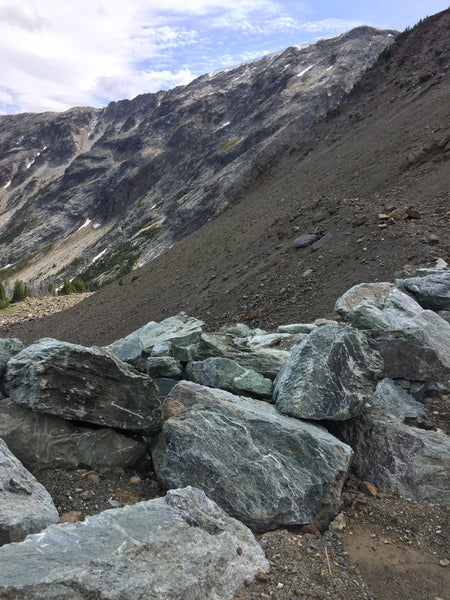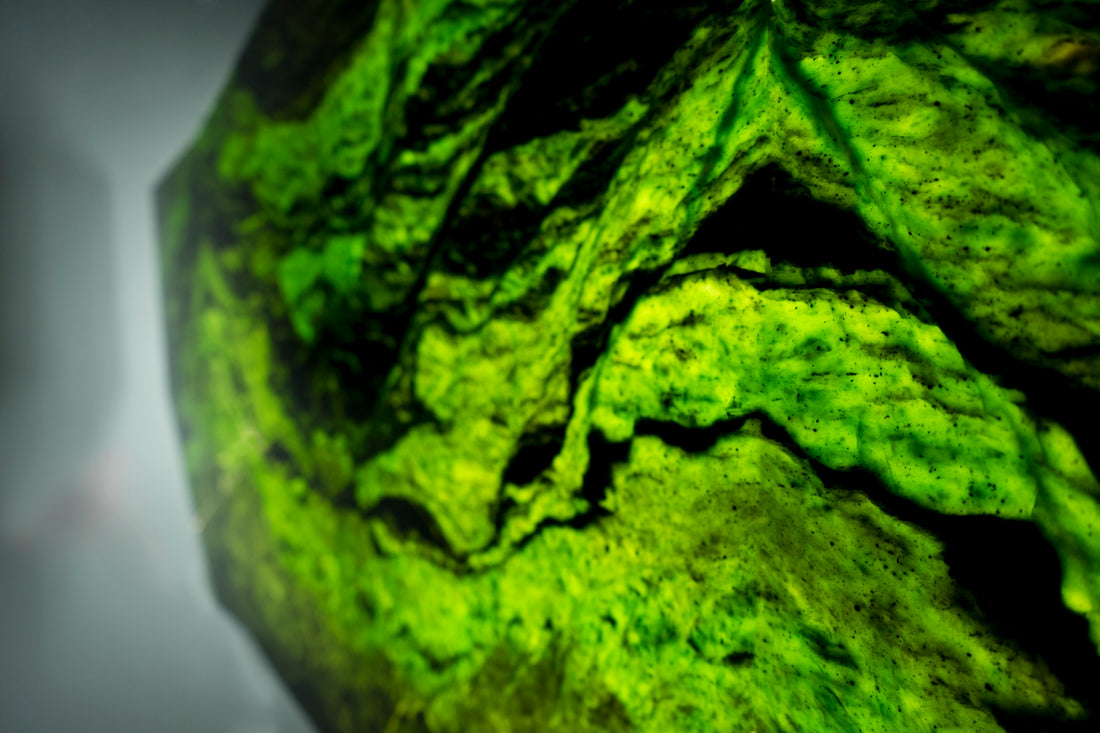
British Columbia's Jade Mines produce around 75% of the Earth's nephrite jade available for purchase each year. Polar Jade is the brightest, most translucent, hardest, greenest nephrite jade ever discovered and mined in British Columbia Canada.

Fathom Stone Art works closely with Whistler Jade mine located approx 50 miles N.E. of Whistler to source most of its high-grade jade, along with a few other mines in Northern BC. Whistler Jade Mine was Canada's very first jade mine claim. They started mining the very hard and greatly cherished green stone in the 1960s and were packing the heavy stone weighing 190 lbs per cubic foot out by horseback. After many years, they eventually began removing the stone by helicopter. After some more years, a road into the mine was permitted, engineered, then built, and is still maintained today. The mine is located in a, at 7,500 feet elevation, the road in and mine is surrounded with towering majestic mountains as you can see in the photos. This historic mine produces some of BC's highest-quality jade. The Whistler jade mine is the only mine located in the southern 3/4 of BC. All of the other mines are located in the northern half of BC, some near the Alaska and Yukon borders in the N.W corner of BC. Fathom Stone Art showcases one of the largest finest collections of made in Canada BC Jade sculptures. Here are some new & top pieces we have available today. Fathom Stone Art Jade Sculpture Collection.




 There are two types of jade. Jadeite which has not been found in Canada or Alaska yet is the harder jade that people desire for jewelry and can cost up to and even more than $1,000,000 USD per pound in its raw form. Jadeite is very rare, there are only a few hundred kilos produced worldwide each year. The jadeite is typically sold at auctions for astronomical prices, with its weight worth far more than gold in many deals.
There are two types of jade. Jadeite which has not been found in Canada or Alaska yet is the harder jade that people desire for jewelry and can cost up to and even more than $1,000,000 USD per pound in its raw form. Jadeite is very rare, there are only a few hundred kilos produced worldwide each year. The jadeite is typically sold at auctions for astronomical prices, with its weight worth far more than gold in many deals.

Nephrite jade although rare is more abundant than nephrite jade. British Columbia and Alaska mine an average of 12 containers or 250,000 kilos of jade per year. Most mines are buried in snow 8 months of the year, limiting the mining season to 4 months June, July, August, and September. The mines are usually located high in the mountains of BC & Alaskan and require a tedious and difficult mining operation to get the small boulders out of the mountainsides. 95% of the greenstone mined is discarded because it's not pure, and is not worth the cost of mining to buyers looking to turn stone into jewelry. The rare jade strike of pure high-quality nephrite is rare and tasking to mine.



BC & Alaska hold over 90% of the entire world's nephrite jade, thus making it the #1 supplier of nephrite jade today. Most of the jade mined in British Columbia is shipped ocean freight to Asia to fill the demand for jade jewelry by the Asian market. Approximately 5% is left for the rest of the world including Canada.

Jade was first identified in Canada by Chinese settlers in 1886 in British Columbia. At this time jade was considered worthless in Canada because the prospectors were searching for gold because there was no established market for Jade. Jade was not commercialized in Canada until the 1970s.

Jade mining is done from mountains that contain bountiful deposits of jade. Jade is exposed using diamond-tipped core drills in order to extract samples. This is done to ensure that the jade meets requirements before the grueling process of excavating these rugged mountains. Hydraulic spreaders are then inserted into cleavage points in the rock so that the jade can be broken away. Once the boulders are removed and the jade is accessible, it is broken down into more manageable 10-tonne or smaller pieces using water-cooled diamond saws. The jade is then loaded onto trucks and transported to the proper storage and cutting facilities.



VIEW FATHOM BC JADE SCULPTURE COLLECTION

